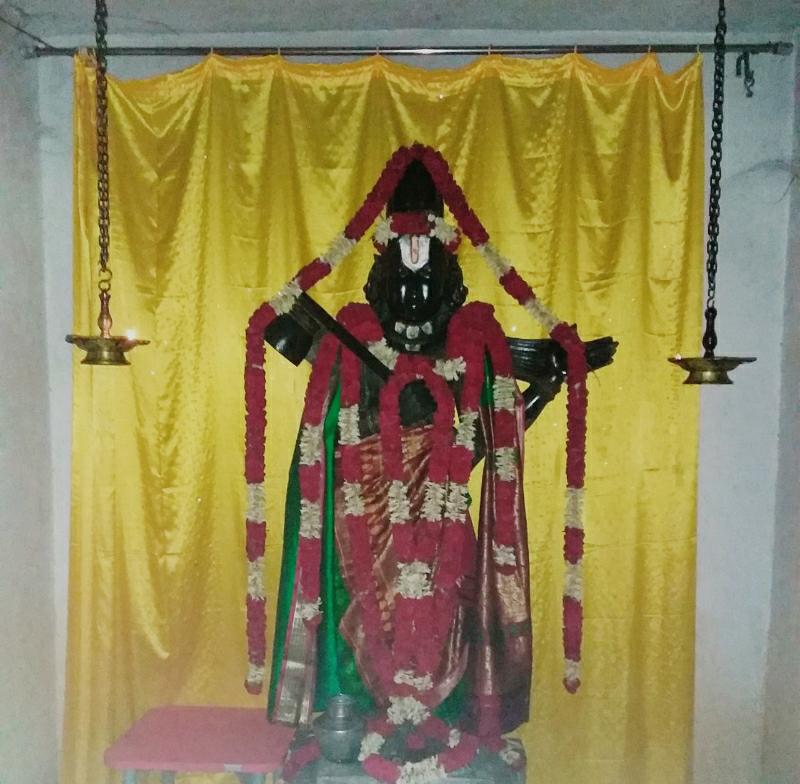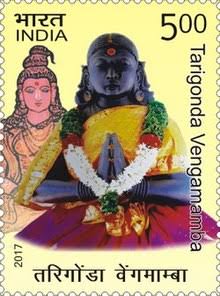Table of Contents
Brief Biography of Annamacharya
In the sankeerthana copper – plates and epigraphs of Tirupati devasthanam, four cohorts of the Tallapakam family, who grew up in the fifteenth and sixteenth centuries A.D., come to prominence. Tallapakam poets were Nandavarika Brahmins, including Allasani Peddanna, the graceful poet in the court of Krishnadeva Raya. Annamacharya is the first member of the family masterpiece, and they are careful – guarded on copper – plates in a small room in the temple of Lord Sri Venkateswara at Tirumala, and the works that he wrote are categorized primarily into three categories. Adhyatma Sankeerthanalu, Sringara Sankeerthanalu and Sringara Manjari. Annamacharya composed Sankeerthanas in the name of Lord Sri Venkateswara for eighty years, from 1424 to 1503 A.D., and sung numerous songs and at least one song every day in His godly companionship. Thus he is contemporaneous with Adi Van Sathakopa Jiyar and Kandadai Ramanujayyangar, having existed throughout the time in power of the concluding kings of the former dynasty of Vijayanagara from Devaraya II, Virupaksha, Saluva Narasimha, and his son Immadi Nrisimha, and witnessed the two expected invasions of the Vijayanagara empire by the Tulavas and Saluvas during the fifteenth and the early sixteenth centuries. The theme of Adhyatma Sankeerthanalu is the installation of bhakti as well as a commitment to Lord Sri Venkateswara’s worship. In his other work Sringara Vrittapadyala Satakamu, Annamacharya is known as Sankirtanacharya, Dravidagama Sarvabhauma, Andhra Pada Kavitha Pithamaha, and Panchagama Chakravarti, and he is said to have written hundreds of Telugu stanzas describing the love between Lord Sri Venkateswara and His consort Alamelumanga in his another work Sringara Vrittapadyala Satakamu. Annamacharya’s sensual and philosophical works are etched on copper plates, which consist of a variety of ragas followed by talas addressed to Lord Sri Venkateswara. The major aim and focus of this research article is to re-examine the cultural richness of the Tirupati region by examining vernacular Telugu language traditions, then exploring historical perspectives and Annamacharya Sankeerthanas translation from 1403 to 1503 A.D., by selecting a few Sankeerthanas from the Adhyatma – devotional genre.

Medieval Indian History and Bhakti Movement
Following the establishment of Buddhism, the medieval bhakti movement was extensively spread and accomplished as a diverse movement across India from the sixth century B.C. to the second century A.D. Aside from religious ideas, ethical ideals, and admired faiths, culture is also important.(The development of regional languages, music, dance, painting, sculpture, and devotional literature – a massive corpus of religious works closely linked to the bhakti movement – are all examples of culture) as well as arts Bhakti was prevalent and far-reaching in India at various times, and had a significant impact on the medieval state structure and ruling classes. The historical context of the establishment of bhakti, on the other hand, differs from one place to the next. The notion of the bhakti movement in India (growth of bhakti endowed and governed the changes in different places which impacted on society, politics, and culture of the medieval state in India) can be broadly grouped into two primary types in south India: Saivism and Vaishnavism. (“The southern bhakti movement was inherently egalitarian in spirit, and it hardly opposed caste or Brahmanical privileges as such”) The Nayanars are Saiva saints, while the Alvars are Vaishna saints. “From the sixth to the ninth centuries, a religious movement known as the bhakti movement took place in Tamil region, in which Saiva devotees known as nayanars or nayanmars (63 canonized) and Vaishnava devotees known as alvars (12 canonized) played an important role. The nayanars and alvars visited many temples and sacred places singing the hymns they composed in praise of the deities (Siva and Vishnu respectively) of those areas or, according to tradition, by performing miracles as a result of their entire devotion.” Several bhaktas are reported to have appeared simultaneously in several centers, and the movement’s individuality grew by the ninth century. By this time, Alvars and Nayanars (Sundarmurthi Nayanar and Nammalvar are the two saints who first stepped forward to emphasize the importance of saints and temples in their works, and this tradition was carried on by Nathamuni in the tenth century and Nambi Andar in the eleventh century. The Bhakti Movement in South India defined their individuality through substantial literary works in the form of hymns written specifically for deities, resulting in great spiritual outpouring. The Sanskrit term bhakta is translated as “to rule” or “to preserve.” The word Alvar means “to govern” or “to preserve.” Because bhakta was initially used to refer to a servant or retainer who shared his master’s riches, the same word must have come to be used for a devotee over time, given the dasyabhava or attitude of service.”

The word Nayanar, on the other hand, means ‘leader.’ “The title Nayanar could be a Tamilized variant of Sanskrit nayaka, which means leader,’ and is likely to allude to the Saiva belief that the sixty-three leaders were incarnations of Siva’s bhutangas.” Bhakti spread across the east coast, particularly in and around prominent temples like Tirupati and Kanchi. Tirumala or Tirupati is described in early Tamil Sangam literature as the northernmost point of Tamilakam, and Tirumala or Tirupati is also referred to as Venkatam, which is the primary cite of Vishnu. (During the Sangam period, Pulli, a leader at Venkatam, is mentioned as a distant ancestor of the Pallavas, suggesting that the tribal name was Sanskritized for their dynasty title.) The relationship between Tamilakam’s Aryanization and the Venkatam is crucial. “Since Venkatam, the earliest northernmost center of Vaisnava bhakti cult, appears closely associated with the Pallavas, the bhakti movement was a byproduct of the Aryanizing or Sanskritizing influence,” says the author, “the northernmost point of Tamilakam was also the point of contact between the Aryan and Tamil ways of life.”
By the end of the ninth century, the bhakti movement had navigated the Tamilakam and occupied the three most important kingdoms – Cola, Pandya, and Cera. Alvars and Nayanars completed the first edited volumes of their Vaishnava and Saiva canons, which are now ready for use in temples. During the eleventh century, the movement had firmly entrenched itself in the community. Bhakti functioned as a personal and central faith to Lord Vishnu in Sri Vaishnavism. (Bhakti is fundamental in Sri Vaishnavism, and salvation is the ultimate way of bhakti.) According to Ramanuja, there is a God who oversees the world’s processes. As a result, Sri Vaishnavism has a huge religious consciousness. Ideas for such religious realizations can be found in a range of Puranas, agamas, Upanishads, and Divya prabhanda stories. The saints of Sri Vaishnavism at Tirupati Temple, the alvars, prabhandakartas, and acharyapurushas, absorbed the bhakti movement’s tenacity. Between the fifteenth and sixteenth centuries in India’s history, bhakti literature reigned dominant. Poets like Meera Bai from Rajasthan, Guru Nanak from Punjab, lyricists such as Sree Chaitanya Prabu from Bengal, the ‘Abhang – poets’ Tukaram from Maharastra, Hari – Dasa from Karnataka like Vyasaraya, Kanaka Dasa and Purandara Dasa, Tallapakam musicians and poets like Annamacharya, Peda – Tirumalacharya and Chinna – Tirumalacharya from Andhra Pradesh bestowed to the highest form of bhakti through their works to the society.
They are surrounded by the highest values, purity, simplicity, virtues, ethics, code of conduct, and religious components throughout their life. As a result, the religious literature of the time provided comfort to people, and the factor of trust influenced people’s thoughts to gravitate toward devotion, which led to salvation. Telugu literature has a special place for poetic – lyrics. These poetic – lyrics act as a link between classical and folk literature. For the first time in Telugu literature, Sree Krishnamacharyulu’s four lakh poetry – lyrics, written in free verse, are a milestone. Moving forward, Tallapakam Annamacharya Sankeerthanas, which are sung in the Kannada ‘Devaranamagalu’ style, with Pallavi and charanam, that is, the opening and closing lines of Sankeerthanas, and dedication called ‘Ankita padaalu,’ established Annamacharya as the progenitor of poetic – lyrics, also known as ‘Pada Kavitha Pithamaha,’ and also Vaggeyakara that is, ‘vak’ – wordsof lyrics and ‘geya’ – musical settings. As a result, the glory of Tallapakam musicians and poets spans around one to fifty years of Telugu literature.

Annamacharya Devotional Compositions
Song composition – 01
nAnATi batuku nATakamu
kAnaka kannadi kaivalyamu ||
puTTuTayu nijamu pOvuTayu nijamu naTTa naDi kAlamu nATakamu
yeTTa neduTa gala dee prapanchamu
kaTTa gaDa paTidi kaivalyamu ||
kuDi chEdannamu kOka chuTTEdi
naDi mantrapu pani nATakamu
voDi gaTTu konina vubhaya karmamulu
gaDi dATi napuDe kaivalyamu ||
tegadu pApamu teeradu puNyamu
nagi nagi kAlamu nATakamu
yegu vane Sree vEnkatESwaru DElika
gaganamu meedidi kaivalyamu ||
This song is sung by Annamacharya in Vyragyam, which means asceticism. He claims that all occupations and attachments are delusions, and he cautions that the repercussions of our misdeeds will not go away and that only faith in Venkateswara and the quest for salvation would save us.
Every day’s existence is a dramatic event. Salvation is the ultimate, whether you see it or not.
Birth and death are unavoidable. The time in between is filled with drama. This life is an illusion, and liberty is the ultimate goal.
It is commonplace to eat meals and dress in clothes.
You will be accompanied by the ultimate consequences of your good and evil activities.
There is only release after passing that stage.
No one can be separated from his or her sins or virtues. It’s all a trick of the light. Sri Venkatesawara is the supreme ruler. Emancipation is a long way off.
Song Composition – 02
nitya pooja livigO nErichina nO hO
pratyaksha mainaTTi paramAtmuniki ||
tanuvE guDi yaTa talayE SikharamaTa
penu hrudayamE hari peeThamaTa
kanu kona choopulE ghana deepamulaTa
tana lOpali antaryAmikini ||
palukE mantramaTa pAdaina nAlikE
kala kala manu piDi ghanTa yaTa
naluvaina ruchulE naivEdyamulaTa
talapu lOpala nunna daivamunaku ||
gamana chEshTalE anta ranga gati yaTa
tamigala jeevuDE dAsuDaTa
amarina voorpulE yAla paTTamulaTa
kramamutO Sree vEnkatarAyaniki ||
Annamacharya believes his body to be a temple and the functioning of his sense organs to be various services to Lord Venkateswara in this hymn.
In front of me is my usual worship of my Lord.
The body is a temple, and the head is its tower. To the conscience, his elegant eyes are like temple candles.
Speech is a Mantra in and of itself. The buzz of the globe is similar to the ringing of bells. All excellent tastes are sacrifices to the God within one’s soul.
Conscience is expressed in all motions and deeds. This life is dedicated to His service. Lord Venkataraya enjoys deep sighs as much as he enjoys devotees.
Song Composition – 03
AntaryAmi alasiti solasiti
intaTa nee SaraNide jochchitini||
kOrina kOrkelu kOyani kaTlu
teeravu neevavi tenchaka
bhArapu paggAlu papa puNyamulu
nErupula pOneevu neevu vaddanaka ||
janula sangamula jakka rOgamulu
ninu viDuvavu neevu viDi pinchaka
vinayapu dainyamu viDu vani karmamu
chana dadi neeviTu SAnta parachaka ||
madilO chintalu mailalu maNugulu
vadalavu neevavi vaddanaka
yeduTanE Sree vEnkaTESvara nee vade
adana gAchitivi aTTiTTanaka ||
Annamacharya expresses his philosophic dissatisfaction with existence in this composition. He advises that everyone take action to avoid becoming enamored with worldly pleasures and instead surrender to Sri Venkateswara for emancipation.
My conscience, oh, I’m fatigued. I place myself at your feet and surrender.
Desires are boundless ties. They will cling to you until you snap. All crimes and piety bind us tightly. Unless you refuse, they will not leave you.
Human ties and difficulties will not vanish unless you remove them. You’ll be plagued by misery and the effects of karma as long as you don’t find serenity.
You will not be free of mental anguish and sinful thoughts unless you reject them. Sri Venkatesawara is in front of you, ready to protect you without hesitation.
You might also be interested to read about Andal and Vengamamba. Follow the link to read more.



